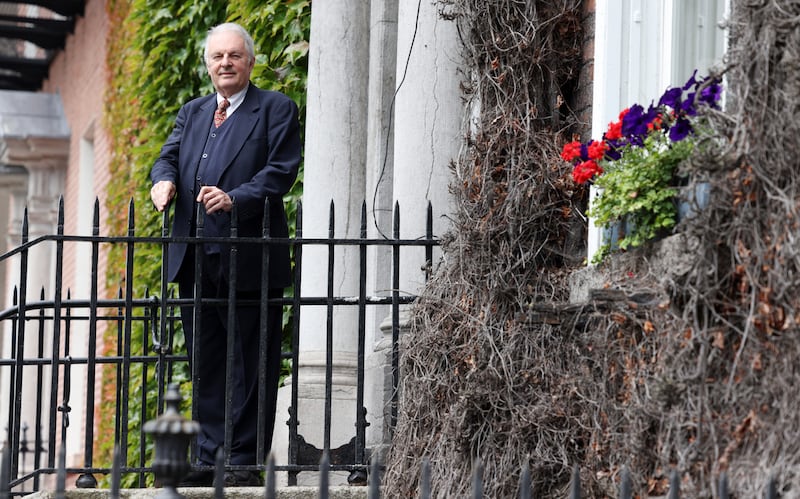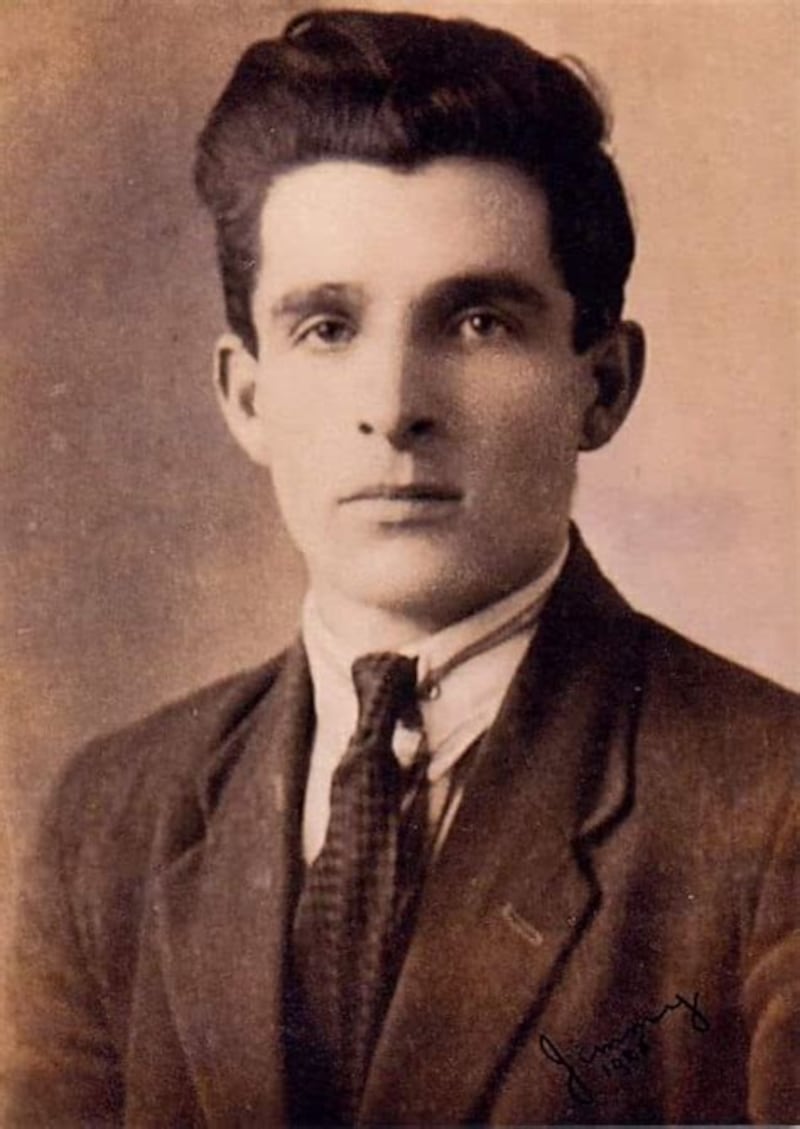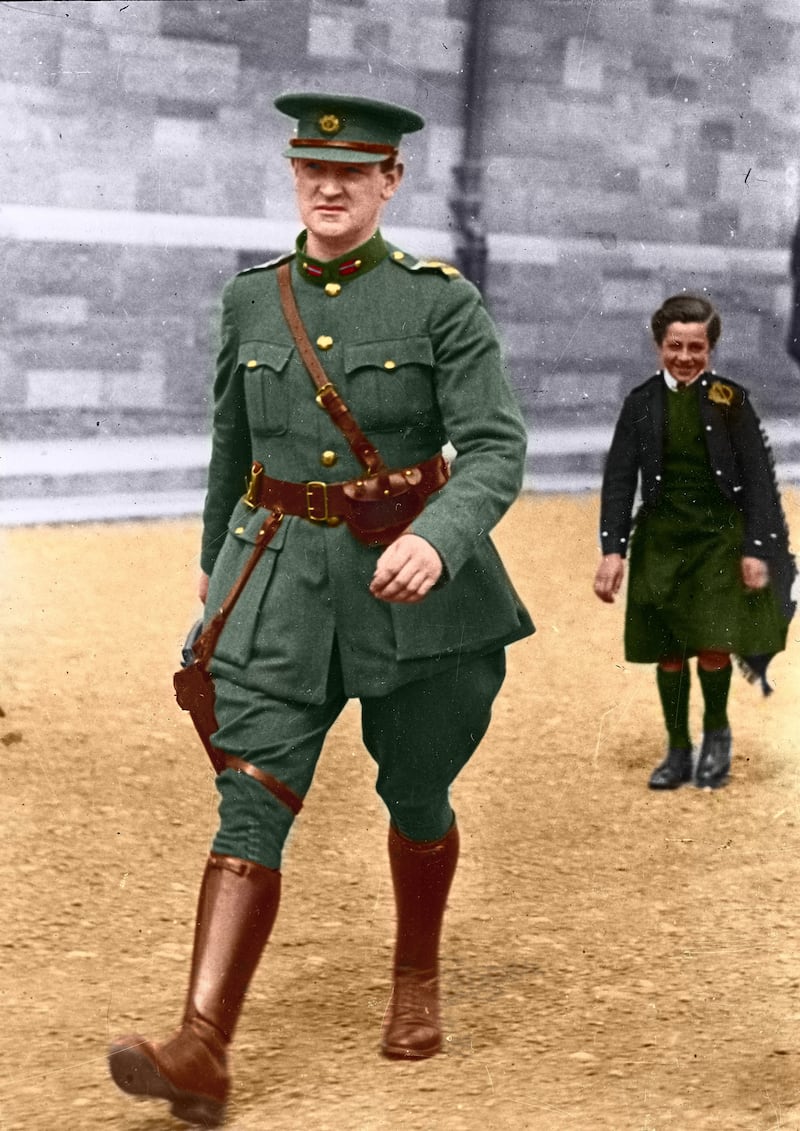Sitting in the snooker room in the Kildare Street and University Club on St Stephen’s Green in Dublin, the conversation with Irish Revolutionary Brotherhood (IRB) historian John O’Beirne Ranelagh is catholic, in the proper sense of the word.
In minutes, it moves from Michael Collins and Éamon de Valera and hidden messages in a yellow car to how Georg Ritter von Trapp, immortalised by The Sound of Music, fared in a submarine inspired by the IRB, or how Tom Maguire, once the last survivor of the second Dáil, had a butler.
O’Beirne Ranelagh – “O’Beirne in Ireland, Ranelagh in England and both in the title of a book”, he laughs – has written The Irish Republican Brotherhood – 1914-1924, published by Merrion Press.
Born of republican pedigree – his father Jim was a leading Old IRA figure in Cork in the War of Independence, and later on the republican side in the Civil War – O’Beirne Ranelagh imbibed history from birth.
Blessed with his father’s contacts and good wishes, he interviewed 100 then-ageing former members of the IRB during the 1970s when the Troubles in Northern Ireland were at their height.

Some fruits were used for a PhD, but much was unused: “Fifty years ago, Civil War feelings were still pretty high. People said things about others which I thought would not be sensible to push out.
“I remember [socialist republican] Peadar O’Donnell describing Cathal Brugha as not having the brains of a rabbit, that kind of remark,” says the historian, author and television producer.
“Since I then had a weekly coffee session with his son, [Fianna Fáil’s] Ruairí Brugha, I thought, ‘Give it time, it will come out’. So that was the kind of thing that stilled me then, but time moves on,” he says.
[ Cathal Brugha remembered 100 years after his untimely death in the Civil WarOpens in new window ]
For the Cambridge-based historian, the “consciously small and elite” IRB is in today’s world the forgotten chapter in Ireland’s revolutionary years, but one whose history is central to understanding the period.
Besides invading Canada, the IRB in the United States commissioned the first submarine, but then got into a row about costs before stealing it – it formed the basis for all navies later, including that of Von Trapp’s Austro-Hungarian empire before the first World War.
“Just think of that, the money, the organisation, the determination. It’s really something. That spirit came down through the IRB in imagination and method, ending up in its last powerful days as Michael Collins by another name.”
However, myth and legend bring their own problems.
History is different in Ireland than in England, he argues: “One of the marvellous characteristics of Irish culture and Irish nationalism, which is entirely enmeshed with Irish culture, is the way myth and legend are as strong as fact and history.
“It’s alive. In Britain, I think it’s mostly factual. In Ireland, you get a lot of the legendary in people’s consciousness to the present day, which I think is marvellous. That carries a basic wisdom with it, which can be easily underrated.”
However, decades of study, which led to him playing a key production role in Ireland: a television history, the seminal Robert Kee TV series of the late 1970s, early 1980s, has left him with feelings of regret.

For centuries, the most enduring role for republicans, if not successful in rebellion, was to be the holders of the flame for a new generation, a role the IRB played in advance of the Fenian Rising in 1867 and up to 1916.
Today, it is a mantle claimed by dissident republican groups: “Keeping the flame alive? Honestly, it doesn’t make sense. Bluntly, it always comes down to killing people. And anything that needs to kill people to be right, or to win, is wrong.”
Again and again he found the pain of disappointed hopes in men such as Tipperary Old IRA volunteer, Sean Fitzpatrick and Cork’s Liam Deasy, who signed the surrender order for republican forces in the Civil War.
“Both were broken and saddened by the Civil War. That ruined their hopes and expectations. And so, they both, I feel, just existed afterwards, but not more than that,” he says.
Deasy he particularly admires because of the vitriol he faced in the decades afterwards: “A wonderful man. But he stood up and looked them in the eye. Didn’t go to America. Stayed here.”
Despite the differences left by the Civil War, he remembers his interviewees – many in their 80s or older – uniting in their IRB memories, the time before innocence disappeared from their lives.
“I found myself carried along. The IRB was something they could all agree on. There was an idealism then. They split later but, nevertheless, they had shared those times. That was instructive.”
With the wisdom and exhaustion of old age, he says, “most wanted to go along with the idea that, ‘We beat the biggest empire in the world’, but a lot of them didn’t actually think so, but they wouldn’t go against it, publicly”.
Here, O’Beirne Ranelagh pauses, thinking about his next words. He has thought about them carefully, so he delivers them in slow, measured tones.
“Ireland’s freedom was not won, it was given,” he says.
“That’s unpalatable, but it is a fact. A recognition would mean that we could build with greater amity because nothing’s going to be won by force any more on these islands. It’s got to be won by agreement and friendship.”
This “won/given” argument was better understood at the time, he argues. Promising “war, terrible war”, Lloyd George had been prepared to “swamp” Ireland with British military and “Collins knew he meant it”.
Equally, both Lloyd George and Collins believed that the Border Commission set up as part of the Anglo-Irish Treaty would mean “the Border wouldn’t be there forever, I think they both believed it”.
His message is not palatable, he accepts: “I’ll probably be called an East Irelander, if not a West Brit, and it gives me no pleasure to find myself not on the British side, but being the one to say, ‘Wise up’.
“The truth is what you must deal with. Because if you deal with it, you can make a better future rather than pretend that the past was a great success, which it wasn’t,” he goes on.
Nevertheless, he still has regard for men such as Maguire, who was seen by generations of post-1969 republicans as the keeper of the flame, even though O’Beirne Ranelagh shares none of his views.
“I went to see him. He was in a morning coat as ‘president of the Republic’, with an Irish flag behind him. He would only use sterling. He refused to pay taxes. I said, ‘What happens?’. ‘They leave me alone,’ he replied.”
Remembering the visit to Cross in Co Mayo, near Cong, he says: “He had what I understood to be a butler. The butler opened the door for me. It was kind of amazing, all of it.”
If generous about Maguire, the historian is withering about Tom Barry: “He was an egomaniac. Daddy said that in 1919 in Bandon he saw Barry running looking for Shinners to beat up.
“Then he changed his tune. Some IRA remember Barry making contact but the IRA posted guards around the place because they didn’t know whether Barry was coming with a whole lot of Brits, or genuine.”
Barry was ruthlessly determined “to outdo the next man, to prove his colours”, and that explains “his ego and mean mindedness later on” – traits well understood by contemporaries “who knew what they were dealing with”, he says.
Partly rising from one of the Kildare Street club’s coffee-coloured armchairs, O’Beirne Ranelagh shares a colourised photograph of Collins on the day of his death in west Cork, which brings us back to the colour yellow.
“That car was in bright yellow. People don’t realise this. How many yellow cars do you see? It was probably the only one in Ireland then. I think it was probably specially painted yellow,” he says.
Yellow is significant because the yellow sunburst was the emblem of the IRB: “That’s what he was doing down there. He was trying to rebuild the old ties that had bound people together in the IRB.” His cap emblem had a yellow background, too, the only one.
However, the men that Collins met that day in Sliabh na mBan were mostly “Trucileers”, who had joined the IRA during the Truce, unversed in the ties that bound older colleagues together.

O’Beirne Ranelagh’s 1970s search for documents brought him – with the aid of a 1936 phone directory – to the North Circular Road in Dublin in search of Martin Conlan, the last secretary of the IRB’s supreme council.
Having knocked on the door, he discovered that Conlan had died years before. However, he remembered before the door closed to ask if Conlan had left papers behind. He had, and the woman he met had been his housekeeper.
On his death, she inherited the house and his effects. His papers were in a tea chest in the attic: “She gave them to me for a £10, a lot of money then. They included IRB constitutions, membership lists and Circles lists, and correspondence. An extraordinary trove.”
His father, whose ashes are buried in the republican plot in St Finbarr’s Cemetery in Cork, was “an unreconciled republican to the day he died. Truly, he wouldn’t have anything to do with the Irish State. Nothing at all.”
He fled Ireland in 1924 after he was shot by a friend, who feared he would be exposed for playing a part in the army mutiny: “I remember the man in our sittingroom years afterwards. Daddy’s attitude was, ‘it’s all over’.
“Following two decades in the US he returned to farm badly and unprofitably in Kildare ... Later, he rejected attempts to make him a senator, before he put some money behind the founding of Clann na Poblachta”.
“He was a great supporter of Noël Browne, but very opposed to De Valera and Fianna Fáil,” says O’Beirne Ranelagh, with the affection for his father, who died in 1979, audible in his words.
Curiously, his father had more time for Fine Gael, but the story behind that lay in the depths of the Spanish civil war and his membership of the American Abraham Lincoln Brigade, which fought on the side of the republic.
“He was in the siege of Madrid, and he was rescued by Blueshirts. They knew exactly who he was, but, nevertheless, they took him in. He was on the march to Malaga, when the Blueshirts left Spain. That’s how he got out,” says the historian.
However, his father strongly opposed the Provisional IRA’s decision to resort to violence in 1969: “He went around republican circles in ‘68/‘69 doing absolutely everything he could to say ‘this is a mistake and you mustn’t do it’.”
For his trouble, he received a bomb in the post.
Violence was not inevitable. The IRA in 1964 had renounced its use, years before the Officials/Provisionals split: “The danger always is that new generations can be enthused with all the old dreams and mysteries,” he warns.



















